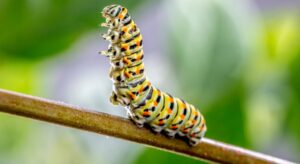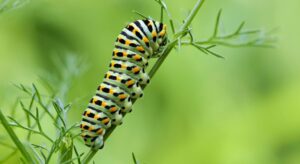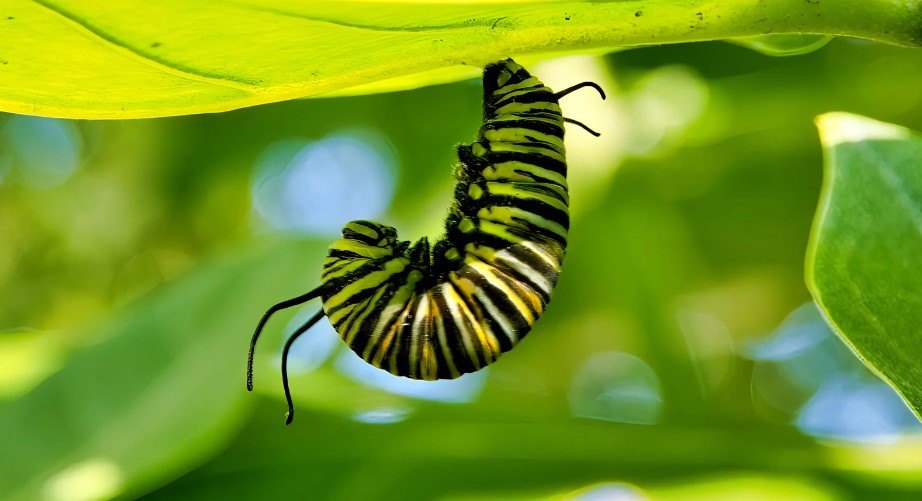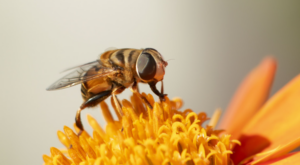Caterpillars are the larval stages of butterflies, and moths are easily identified by their worm-like, squishy bodies. If you’re dealing with a caterpillar infestation, it’s essential to take action promptly to protect your plants and fruits. In this blog post, we’ll discuss the signs of caterpillar presence, effective methods to get rid of caterpillars, and natural solutions to keep your plants safe and healthy.
Signs of Caterpillars

Before we can address the caterpillar infestation, it’s important to identify the signs of their Presence.
- Chewed or damaged leaves: Look for irregular holes or missing sections on the leaves of plants.
- Presence of droppings: Caterpillars leave behind small droppings near their feeding sites.
- Silk webs or cocoons: Some caterpillar species create silk webs or cocoons on branches or leaves.
- Caterpillar sightings: Caterpillar crawling on plants or the ground is a clear sign of their Presence.
- Damage to fruits or vegetables: Caterpillars often target fruits and vegetables, causing visible Damage such as holes or scars.
How to Get Rid of Caterpillar?
Now that we know the signs of caterpillar infestation, let’s move on to the topic of how to get rid of them. We can easily get rid of them with some methods. Such methods are,
Spray Neem Oil
Neem oil is a natural insecticide that eliminates caterpillar feeding and growth. By spraying neem oil on the affected plants, we can easily eliminate the caterpillars, which mostly hide under the leaves.
Use Bacillus Thuringiensis
Bacillus thuringiensis is commonly known as Bt, and it is a biological insecticide that specifically targets caterpillars. Directly apply the Bt spray to your plants where caterpillar activity is high. Within a day or two, you can notice the caterpillar has decreased due to the effect of Bacillus Thuringiensis.
Natural Predators
With the natural predators of caterpillars, such as sparrows and chickadees, which are voracious caterpillar-eaters, we can reduce the caterpillar population. We can also attract beneficial insects like ladybugs, lacewings, and parasitic wasps, which mostly prey on insects like caterpillars and their eggs.
Caterpillar-Repellent Plants

Some specific plants have natural compounds and odours that can repel caterpillars. By growing these plants, we can eliminate caterpillars in our garden. Such plants are marigolds, lavender, and mint. Plant them around your garden to reduce caterpillars’ feeding on your plants. These plants not only add beauty to your garden but also serve as natural pest repellents.
Garlic Solution
Caterpillar won’t stand on the pungent smell like garlic. So, mix garlic, molasses, dish soap, and a litre of warm water together to create a garlic solution and spray them around your plants. With this garlic-pungent smell, we can easily kill the caterpillars, which are becoming a nuisance to our plants.
Conclusion
Caterpillars may be a nuisance to our plants and gardens, but with the above-mentioned DIY methods, we can easily eliminate those pests and secure our plants and fruits. If these DIY measures are not working, then get help from a pest control service; they have some trained professionals who already have experience dealing with caterpillars.






